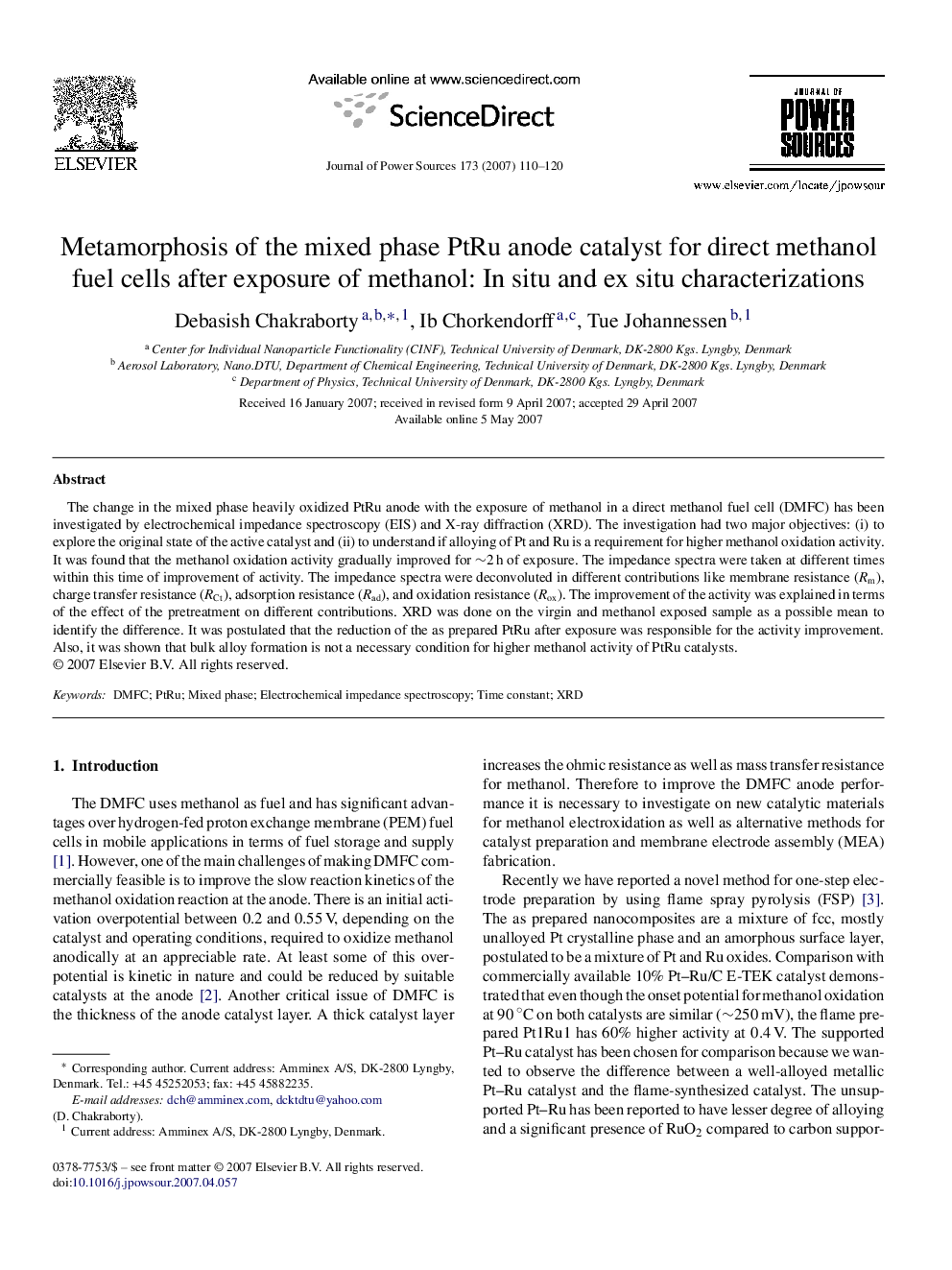| Article ID | Journal | Published Year | Pages | File Type |
|---|---|---|---|---|
| 1294875 | Journal of Power Sources | 2007 | 11 Pages |
Abstract
The change in the mixed phase heavily oxidized PtRu anode with the exposure of methanol in a direct methanol fuel cell (DMFC) has been investigated by electrochemical impedance spectroscopy (EIS) and X-ray diffraction (XRD). The investigation had two major objectives: (i) to explore the original state of the active catalyst and (ii) to understand if alloying of Pt and Ru is a requirement for higher methanol oxidation activity. It was found that the methanol oxidation activity gradually improved for â¼2Â h of exposure. The impedance spectra were taken at different times within this time of improvement of activity. The impedance spectra were deconvoluted in different contributions like membrane resistance (Rm), charge transfer resistance (RCt), adsorption resistance (Rad), and oxidation resistance (Rox). The improvement of the activity was explained in terms of the effect of the pretreatment on different contributions. XRD was done on the virgin and methanol exposed sample as a possible mean to identify the difference. It was postulated that the reduction of the as prepared PtRu after exposure was responsible for the activity improvement. Also, it was shown that bulk alloy formation is not a necessary condition for higher methanol activity of PtRu catalysts.
Related Topics
Physical Sciences and Engineering
Chemistry
Electrochemistry
Authors
Debasish Chakraborty, Ib Chorkendorff, Tue Johannessen,
